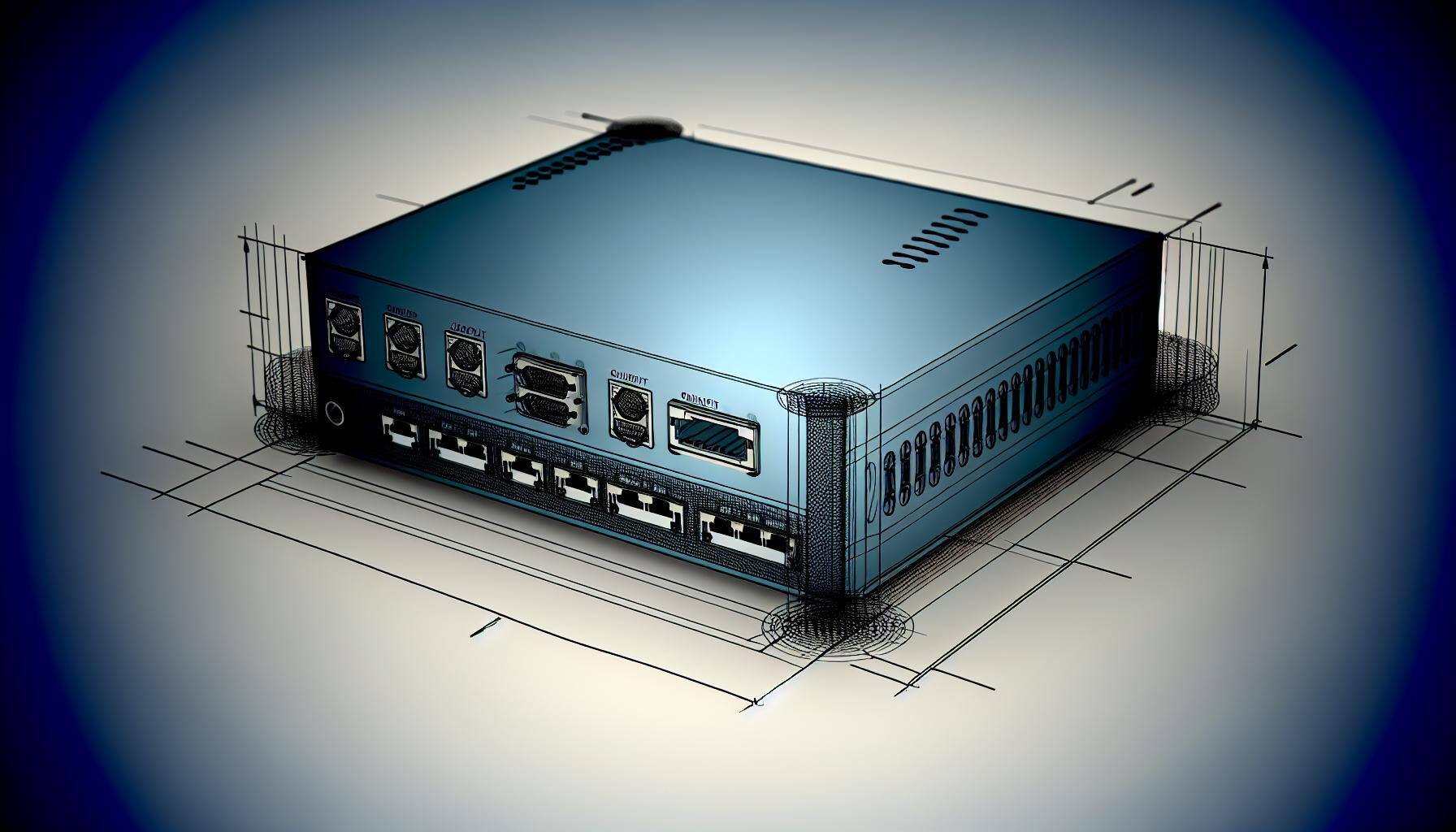What Is the OSI Model? 7 Layers Explained
Networking can seem like a complex web of processes and protocols, but the OSI model simplifies this by breaking it into well-defined layers. Understanding the OSI model is essential for anyone involved in IT, as it serves as a universal framework for how data is transmitted, processed, and received across networks. This blog will explore the OSI model's layers, its significance, and how it compares to the TCP/IP model, equipping you with the knowledge to navigate the intricacies of modern networking effectively.
What Is the OSI Model?
The OSI model, which stands for the Open Systems Interconnection model, is a conceptual framework that standardizes the way different networking or application systems communicate with each other. Often referred to using the OSI model acronym, it breaks down the complex process of communication into manageable and well-defined layers, each with its specific responsibilities. Introduced in the late 1970s by the International Organization for Standardization (ISO), the OSI model provides a universal language for communication, enabling interoperability between various devices, software, and technologies. For those wondering about the acronym for the OSI model, it emphasizes "Open Systems Interconnection," highlighting its role in connecting diverse systems. This reference model outlines how data should be transmitted, processed, and received over a network. By understanding the OSI model and its functions, professionals can diagnose and troubleshoot communication issues effectively, optimize system performance, and design efficient network architectures.
.webp?width=610&height=879&name=Layers%20of%20OSI%20Model%20Final-02%20(1).webp)
Layers of OSI Model
The OSI model is divided into seven distinct layers, each with specific tasks and roles. These seven layers of OSI model work collaboratively to facilitate seamless data communication. Let’s dive into each layer in detail.
First Layer of OSI Model: Physical
The Physical layer is the foundation of the OSI model. It deals with the physical connection between devices and includes the hardware aspects of networking, such as cables, switches, and network interface cards (NICs). This layer defines how data is transmitted in the form of electrical signals, light pulses, or radio waves. It specifies standards for connectors, voltage levels, and transmission speeds.
Key functions of the Physical layer include:
- Establishing and terminating physical connections.
- Managing data transmission rates.
- Encoding and signaling mechanisms.
Second Layer of OSI Model: Data Link
The Data Link layer ensures reliable data transfer between two directly connected nodes. It is responsible for error detection and correction, as well as framing data packets for proper synchronization.
This layer is further divided into two sublayers:
- Logical Link Control (LLC): Handles error checking and flow control.
- Media Access Control (MAC): Manages access to the physical medium.
Key functions include:
- Framing and addressing data packets.
- Error detection and retransmission.
- Ensuring data integrity between nodes.
Third Layer of OSI Model: Network
The Network layer is where routing takes place. It determines the best path for data to travel from the source to the destination, often across multiple networks. This layer works with logical addressing, such as IP addresses, to identify devices on a network.
Key functions include:
- Logical addressing and IP management.
- Packet routing and forwarding.
- Handling congestion control and load balancing.
Fourth Layer of OSI Model: Transport
The Transport layer ensures end-to-end communication reliability. It manages data segmentation, flow control, and error correction for data transmissions between devices.
Key functions include:
- Segmenting and reassembling data.
- Managing error detection and correction.
- Implementing flow control to prevent network congestion.
Common protocols in this layer include Transmission Control Protocol (TCP) and User Datagram Protocol (UDP).
Fifth Layer of OSI Model: Session
The Session layer is responsible for establishing, maintaining, and terminating communication sessions between applications. It ensures that data exchanges occur in an orderly manner.
Key functions include:
- Session establishment and synchronization.
- Managing dialogue between devices.
- Implementing checkpoints for data recovery in case of interruptions.
Sixth Layer of OSI Model: Presentation
The Presentation layer focuses on data translation and formatting, ensuring that the data sent by the sender can be understood by the receiver. It handles data encryption, compression, and conversion to ensure interoperability.
Key functions include:
- Data encryption and decryption for security.
- Data compression to reduce transmission size.
- Translating data formats, such as from text to binary.
Seventh Layer of OSI Model: Application
The Application layer is the closest to the end user. It provides an interface for users to interact with network services and applications. This layer supports various protocols, such as HTTP, FTP, and SMTP, enabling web browsing, file transfers, and email communication.
Key functions include:
- Providing network services to applications.
- Supporting protocols for communication.
- Ensuring data accessibility for end users.
OSI Model Mnemonic
Remembering the order of the seven layers of the OSI model can be challenging, especially for beginners. To simplify this, you can use an OSI model mnemonic. Here are a few popular ones to help you memorize the layers from top to bottom or bottom to top:
- All People Seem To Need Data Processing (Application, Presentation, Session, Transport, Network, Data Link, Physical)
- Please Do Not Throw Sausage Pizza Away (Physical, Data Link, Network, Transport, Session, Presentation, Application)
- A Penguin Said That Nobody Drinks Pepsi (Application, Presentation, Session, Transport, Network, Data Link, Physical)
- Please Do Not Throw Sméagol's Precious Away (Physical, Data Link, Network, Transport, Session, Presentation, Application)
These mnemonics are not only practical but also make the learning process more enjoyable. Choose the one that resonates with you the most, and you will effortlessly remember the OSI model layers and their sequence.
OSI Model vs. TCP/IP Model
The OSI model and the TCP/IP model are two essential frameworks that describe how data is transmitted over networks, but they differ significantly in structure and purpose. The OSI model consists of seven layers—Physical, Data Link, Network, Transport, Session, Presentation, and Application—each with a specific role in standardizing communication processes. In contrast, the TCP/IP model condenses these functions into four layers—Network Interface, Internet, Transport, and Application—offering a more streamlined approach tailored to practical implementation.
The OSI model is a theoretical framework designed as a universal standard for understanding and designing networking systems. While it provides a detailed and modular structure ideal for learning and troubleshooting, it was not widely adopted in practice. The TCP/IP model, developed alongside the rise of the internet, became the backbone of real-world networking due to its simplicity and focus on functionality, supporting widely used protocols like HTTP, FTP, and IP routing.
Despite their differences, both models are valuable to networking professionals. The OSI model offers a granular perspective, making it useful for diagnosing issues and conceptualizing system design, while the TCP/IP model dominates practical applications as the foundation of modern internet communication. Understanding both frameworks enables professionals to bridge theoretical knowledge with real-world networking needs.
Conclusion
The OSI model is an essential framework for understanding how different components of a network interact and function together. By breaking down the complex process of data communication into seven distinct layers, the model provides a structured approach to diagnosing issues, optimizing performance, and designing robust network systems. From the hardware-focused Physical layer to the user-centric Application layer, each level plays a crucial role in enabling seamless communication.
With the help of mnemonics and a thorough grasp of the OSI model and functions, professionals can confidently navigate the world of networking. Whether you are preparing for a certification exam, troubleshooting a network, or designing a new system, the OSI model serves as a trusted guide in the ever-evolving field of information technology.
At Compass, we understand the importance of secure and well-structured IT environments in today's interconnected world. Our team of experts helps organizations navigate complex networking challenges, address compliance requirements, and strengthen their overall cybersecurity posture. Whether you need guidance on designing secure networks, ensuring regulatory compliance, or mitigating risks, Compass is here to support your goals. Contact us today to learn how we can help your organization achieve IT security and compliance excellence.
Contact Us
Share this
You May Also Like
These Related Stories

What Is a Firewall? Definition & Best Practices

Penetration Testing: Black Box vs. White Box vs. Gray Box

.webp?width=2169&height=526&name=Compass%20white%20blue%20transparent%202%20website%20(1).webp)
-1.webp?width=2169&height=620&name=Compass%20regular%20transparent%20website%20smaller%20(1)-1.webp)
No Comments Yet
Let us know what you think